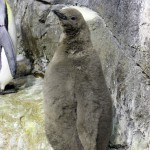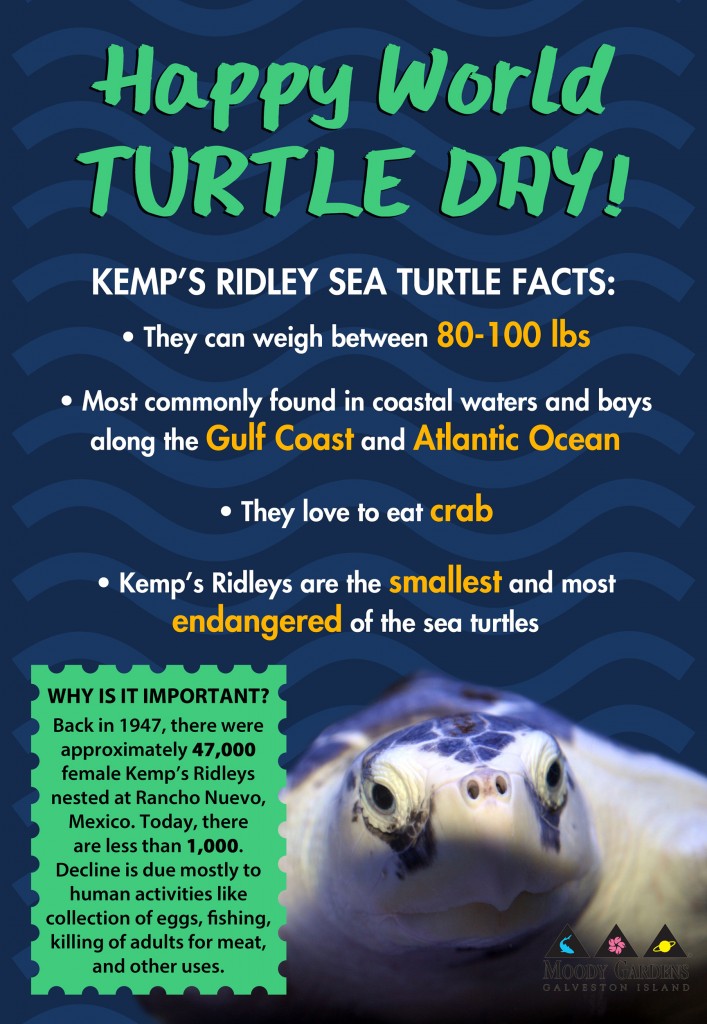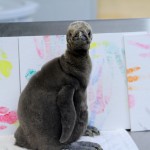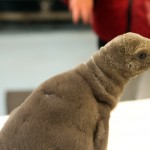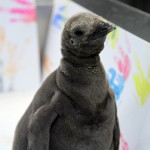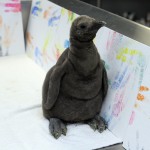Category: Aquarium Pyramid (Page 5 of 8)
By Greg Whittaker
Moody Gardens Animal Husbandry Manager
 In early 1999 I found myself in Taiji, Japan working on a marine mammal acquisition for the Beijing Aquarium. The conservation ethics surrounding “The Cove” are another story deserving its own chapter at another time. While we were working at a Dolphin encounter resort on the outskirts of Taiji, we were staying in a fishing community just to the north called Katsuura. Every day we drove past the waterfront in Katsuura through the bustle of activity around the fishing markets. On one of my few days off, I visited the market to see what was being caught and auctioned. The sheer number of top level predator fishes that were laid out in organized stacks in the football-field-sized warehouse space was amazing. Tuna, mackerel, billfish and ocean sunfish made up the bulk of the daily catch. There were also several piles of shark fins stacked 4’ high and spreading over perhaps a 12’ diameter area. I couldn’t locate any shark bodies in the entire market area, just three or four large heaps of fins.
In early 1999 I found myself in Taiji, Japan working on a marine mammal acquisition for the Beijing Aquarium. The conservation ethics surrounding “The Cove” are another story deserving its own chapter at another time. While we were working at a Dolphin encounter resort on the outskirts of Taiji, we were staying in a fishing community just to the north called Katsuura. Every day we drove past the waterfront in Katsuura through the bustle of activity around the fishing markets. On one of my few days off, I visited the market to see what was being caught and auctioned. The sheer number of top level predator fishes that were laid out in organized stacks in the football-field-sized warehouse space was amazing. Tuna, mackerel, billfish and ocean sunfish made up the bulk of the daily catch. There were also several piles of shark fins stacked 4’ high and spreading over perhaps a 12’ diameter area. I couldn’t locate any shark bodies in the entire market area, just three or four large heaps of fins.
The shark finning problem had not been as apparent back then, but the lack of carcasses hit me as a tremendous resource waste in a culture that had up to that point appeared contrary to such practice. We were scrutinized by neighborhood mama-sans for not removing all recyclable materials from our trash. The few occasions where we ventured through the Taiji waterfront were an incredible lesson in efficiency where the harvested dolphins and whales were carved up for consumption with nearly no waste evident. How could a people so intimately linked with existing on the natural resources of the sea be so wasteful of their harvest? It wasn’t until I later learned of the international demand for shark fin soup, that I fully understood what I had encountered in Japan.
Over the course of 3 months, we passed the Katsuura waterfront market daily and a subliminal counter was clicking in my mind. Six days a week, thousands of tuna, dozens of billfish and those uncountable piles of shark fins every day, rain or shine. Between the seemingly unscrupulous harvest of entire pods of cetaceans in Taiji and the daily take of finfish in Katsuura, the efficiency of removing these natural resources was mind numbing, and the ocean’s ability to sustain this level of take was something I struggled to understand.
On one spring morning shortly before our departure from Japan with our dolphins and whales, we had some free time to explore the area. We happened upon a complex of houses a few streets behind our own that was a processing facility for shark fins. The entire area was perhaps an acre with a large open space between 3 houses. The central yard space was filled with 3 tiered clotheslines with two horizontal racks beneath them. Shark fins were hung on the lines like laundry and all of the horizontal shelving was filled with trays containing drying fins 4 or 5 deep. There were lines strung between the houses, both first and second stories with similar triangular, gray fins hanging in the sun to dry. The entire roof surfaces of all 3 houses, including the shorter sheds attached to them, were completely covered with shark fins of all sizes, looking like roof tiles. There were 2 vans parked in the driveway that were completely stuffed with baskets of dried shark fins inside, and completely covered with drying shark fins on top. My Australian buddy Wayne and I took pictures and tried to count just a small portion of what we were seeing, but couldn’t even begin to estimate how many sharks were represented by what we saw. There were likely 10,000 fins drying at that one complex the day we happened upon it. The staggering thing is that we went back a few days later and there was a completely new batch of fins being processed.
Get schooled about SHARKS at #SharkUWeek at Moody Gardens!
Take a bite out of summer during Shark University Week at Moody Gardens Aug. 4 through Aug. 10. Moody Gardens is a proud sponsor of Discovery Channel’s Shark Week.


Dino is turning 18 today! His favorite food is herring and doesn’t quite like squid. As the biggest sea lion in our exhibit, he currently weighs roughly 800 pounds! Come visit him at the Aquarium Pyramid and wish him a happy birthday.
Visit http://bit.ly/MGAquarium for more information about the Aquarium Pyramid!
The toughest penguin at Moody Gardens is growing into a big guy just like his namesake.
Watt, a King Penguin named after Houston Texans star J.J. Watt, has already grown to around 3-feet tall and 30 pounds in just 2 ½ months.
Watt absolutely loves fish, which has helped him grow so big in such a short about of time. He is a curious little guy, but his dad still watches over him. He’s definitely not ready for his son to be exploring on his own.
Watt suffered a cut on his back shortly after breaking out of his shell. Under the care of Moody Gardens biologists, Watt proved he was one tough chick and made a quick recovery. Now he is on exhibit joining the nearly 100 penguins housed in the Aquarium Pyramid
J.J. Watt is the reigning NFL Defensive Player of the Year and one of the most popular athletes in Houston.
Come see Watt and the other penguins at the Moody Gardens Aquarium Pyramid. The Aquarium is currently open from 10 a.m. until 6 p.m.
- Watt the King Penguin
- Watt with his Dad
- Watt – Tough Little Penguin
- Watt – All Grown Up
The toughest new addition to the Moody Gardens penguin exhibit has been named after the toughest athlete in the Houston area – Texans defensive star J.J. Watt.
Watt, a baby King Penguin who hatched earlier this month, suffered an injury shortly after breaking out of his shell. Under the care of Moody Gardens biologists, Watt proved he was one tough chick and made a quick recovery. He is back on exhibit, joining the nearly 100 penguins housed in the Aquarium Pyramid.
“The little chick braved through it all,” said Moody Gardens assistant curator Diane Olsen. “It was an injury we had to keep an eye on, and our staff did a good job taking care of it.”
Olsen said she’s not completely sure how Watt suffered the injury, a cut on his back, but said it was likely caused by a squabble between the parent and another penguin. Penguins are extremely protective of their young and will fight those that appear to be a threat to their chick.
Galveston veterinarian Dr. Richard Henderson closed the wound after Watt was injured. From there, Moody Gardens Vet Tech Karen Holcroft and the rest of the penguin biologists treated him until the injury was healed.
“You always have to be worried about infection and stuff,” Olsen said. “We cleaned the wound and weighed him twice a day. We watched it very carefully.”
J.J. Watt is the reigning NFL Defensive Player of the Year and one of the most popular athletes in Houston. He was drafted by the Texans in 2011 out of Wisconsin, and quickly became known as one of the toughest players in the franchise’s history.
Olsen said that like all other chicks, the new King penguin will only be on exhibit with its parents for a limited time. Although adult penguins are expert swimmers, babies must be kept safely away from the exhibit waters until they become water savvy.
The gender of the young chick is still unknown because penguins are not sexually dimorphic, meaning it is impossible to tell male and female penguins apart based solely on looks. While away from the exhibit, blood tests will be done to determine the sex of the hatchling.
CLICK HERE FOR AN UPDATE ON WATT
MOODY GARDENS KING PENGUIN HISTORY
King Penguins originally arrived in Galveston in 1998, when a group of staff members from the Aquarium at Moody Gardens joined biologists and other professionals from Chile, France and the United States on an expedition to South Georgia Island in the Antarctic to collect eggs. The eggs were gathered during the fall breeding season and then transported to Galveston and hatched prior to the opening of the Aquarium Pyramid in May 1999.
Moody Gardens has a successful breeding program, with 15 King Penguin chicks hatched since 2003. There has been a total six chicks hatched overall among the King, Gentoo and Chinstrap Penguins this breeding season. This is the first King to hatch this year.
Here at Moody Gardens we have an amazing curatorial staff that take great care of our animals on a daily basis. There’s a lot that goes on behind the scenes from feedings to training to medical care and much more! You can get a sneak peek into some of those interactions by checking out any of our Keeper Presentations during Spring Break. Just show up at the time listed in front of the corresponding exhibit and you’ll be able to see how our staff works directly with some of our animals.
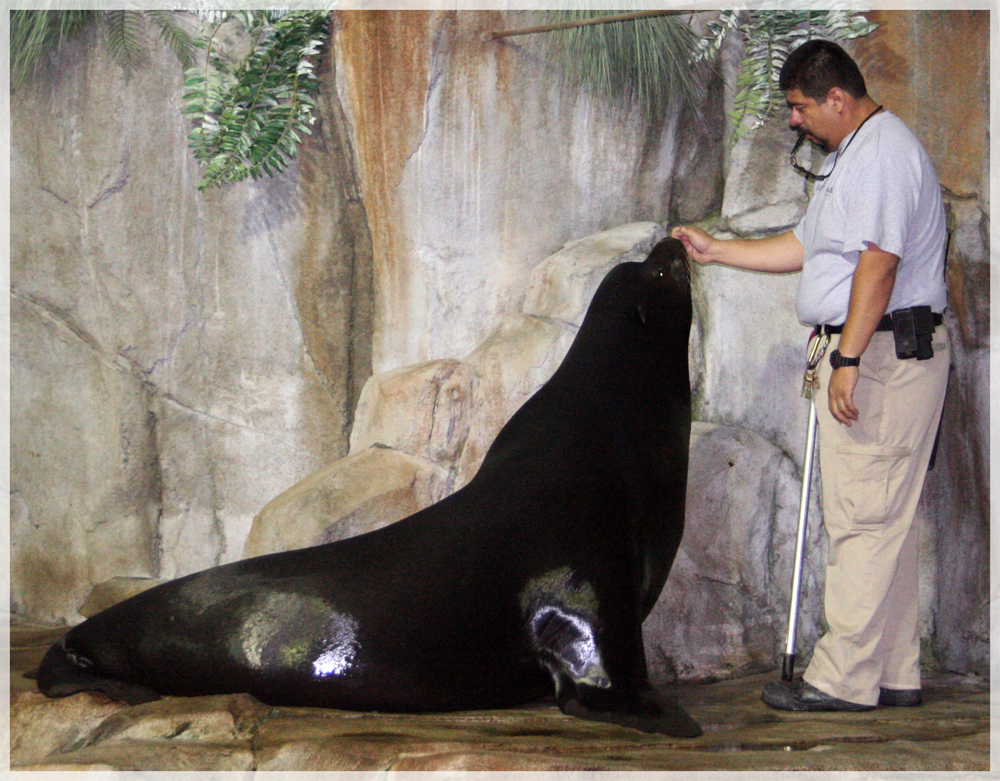
DAILY SCHEDULE
(through March 16)
10:30 a.m. Aquarium Caribbean
10:30 a.m. Seal Exhibit
11:00 a.m. Penguin Exhibit
11:00 a.m. Otter Training
11:30 a.m. South Pacific
11:30 a.m. Butterfly Exhibit
1:00 p.m. Otter Training
1:30 p.m. Butterfly Exhibit
2:00 p.m. Aquarium Caribbean
2:00 p.m. Seal Exhibit
2:30 p.m. South Pacific
3:00 p.m. Penguin Exhibit
 There is so much to see, learn, and participate in at Moody Gardens that it is impossible to fit it all into one trip! If your kids just can’t get enough of Moody Gardens, then Overnight Adventures is the solution! Whether you want to set up a Moody Gardens sleepover for friends or for a classroom, we would love to talk to you about the opportunity.
There is so much to see, learn, and participate in at Moody Gardens that it is impossible to fit it all into one trip! If your kids just can’t get enough of Moody Gardens, then Overnight Adventures is the solution! Whether you want to set up a Moody Gardens sleepover for friends or for a classroom, we would love to talk to you about the opportunity.
We offer two different overnight adventures. Depending on which adventure you choose, students will spend the night exploring either the Rainforest Pyramid or the Aquarium Pyramid.
Creatures of the Night
With the Creatures of the Night adventures, the kids explore how the rainforest comes alive once the sun goes down. Discover how the nocturnal creatures live by using all five of your senses to find your way through the Rainforest. The adventure includes tons of nighttime rainforest activities, including a tour of the Rainforest Pyramid. The sleepover takes place in the Rainforest Entrance.
Nights on the Reef
Have you always wandered what lives above and below the tropical oceans of the world, and what’s going on during the night? Come spend a night exploring and learning about coral reef inhabitants and how they adapt to their particular environment before getting a night’s rest in the aquarium.
Overnight Adventures run from 6:30 p.m. to 8:00 a.m., and include a late-night pizza snack and a light breakfast. The price is $1,000 for up to 20 people, and $50 for each extra person. Chaperones are required.
Reservations must be made at least two weeks in advance. To make your reservation, or for more information, call 1-800-582-4673, ext. 4325, or email us at education@moodygardens.com.
For a Moody Gardens sleepover that includes the whole family, make your reservations at the Moody Gardens Hotel, one of the best places to stay in Galveston. We look forward to seeing you soon.





